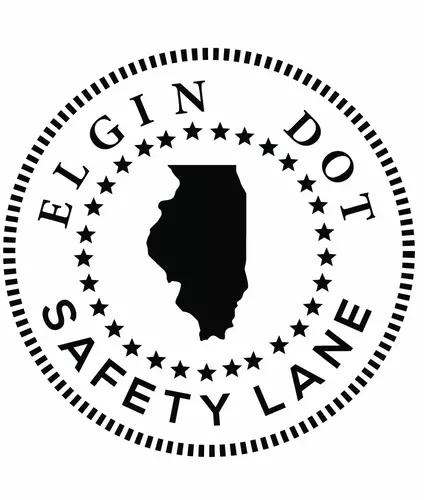Safety Lane Inspection and Price
Commercial Vehicle Inspection
IDOT's safety lane inspections for commercial vehicles primarily focus on the mechanical condition of the vehicle, including its brakes, lights, tires, steering, and suspension.
Inspections are conducted annually at ELGIN DOT SAFETY LANE an Authorized Official Testing Station, with passing vehicles receiving a safety inspection sticker.
The inspection requirements are detailed in 49 CFR 396 Appendix A (Minimum Periodic Inspection Standards), which specifies the minimum standards for equipment and inspections.
Key Requirements & What's Inspected:
- Brakes
- Lights and Reflectors
- Tires and Wheels
- Steering and Suspension Components
- Frame and Axles
- Window Glass
- Exhaust System
- Rear Vision Mirrors
- Safety Chains
Consequences of Non-Compliance
School Bus Inspection
In Illinois, school buses undergo safety lane inspections at ELGIN DOT SAFETY LANE an Official Testing Station every six months or 10,000 miles, whichever comes first, with inspections including brakes, lights, steering and frame.
Public transportation vehicles generally fall under commercial vehicle rules, requiring inspections of brakes, lights, and other safety equipment at least annually. ELGIN DOT SAFETY LANE is an official testing station for school buses and certain other commercial vehicles equipped with specialized lane equipment brake testing devices, to perform these comprehensive safety checks.
School Bus Inspection Requirements
Public Transport Inspection Requirements
What is a Safety Lane Inspection?
Why are these inspections important?
Special Use Vehicle Inspection
In Illinois, IDOT safety lane inspections are required for several specific vehicle types, including most second-division vehicles, commercial motor vehicles over certain weight thresholds, and all public transport and medical vehicles. The inspection frequency and requirements vary based on the vehicle's purpose and gross weight.
Vehicles subject to inspection:
The following special use vehicles undergo an official IDOT safety inspection at ELGIN DOT SAFETY LANE - an Official Testing Station:
Commercial motor vehicles (CMV)
Any single vehicle with a Gross Vehicle Weight Rating (GVWR) of more than 8,000 pounds.
Municipal and Special Use Vehicles:
Inspection frequency:
The required frequency for inspections varies by vehicle type:
What is inspected:
All inspections check for the mechanical and structural integrity of a vehicle's critical components. The inspection includes, but is not limited to:






LYFT - TURO - UBER
Rideshare Vehicle Inspection





